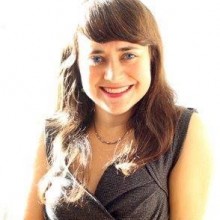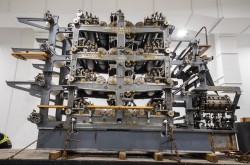Indigenous students contribute to exhibition on astronomy

In March, before social distancing measures, a group of Indigenous high school students from northern communities contributed their ideas to an upcoming astronomy exhibition at the Canada Science and Technology Museum.
The 20 students — from three different communities in northern Manitoba, Saskatchewan, and the Northwest Territories — travelled to Ottawa and spent a full day at the new Ingenium Centre. Ingenium staff worked alongside the youth in interactive sessions, teaching them about an exhibition in development on Indigenous astronomy and gathering their feedback and ideas.
“The group had imaginative and inventive ideas that we’re excited to explore for the One Sky exhibition,” says Carolyn Holland, Exhibition Interpretation Officer. “One group built an immersive replica of a remote sacred site that visitors could experience for themselves. Another made an illuminated star map to introduce visitors to Indigenous constellations.”

Currently in development, One Sky, Many Worlds: Indigenous Voices in Astronomy is a collaborative exhibition led by traditional knowledge keepers from around the world. The exhibition explores the enduring relationship and connection that Indigenous people have with the night sky, and how it has provided — and continues to provide — a practical, cultural, and spiritual guidebook for life.
After a presentation by Curator David Pantalony and University of Ottawa graduate student, Lindsey McGregor, students shared their ideas about what makes a good museum experience and what an exhibition using Indigenous design would look like.

Model of an exhibition in a forest
Then they were asked to build models for the exhibition to bring those ideas to life.
Some students were familiar with Indigenous constellations and stories about the stars. For others, it was new.
“When we saw the star map, those of us from my community thought of Wesakaychak – the Trickster,” said one student from Opaskwayak, Manitoba. “Others didn’t know what it was and came to other conclusions. It’s nice to see that despite it being the same space, there are many different perspectives.”
When they were done building, the group had a chance to ask Science Advisor Jesse Rogerson their questions about astrophysics. Rogerson explained how a star is born, why black holes are dark, and the latest developments related to exoplanets.
“I want to know if I share a birthday with a star,” said another student from Opaskwayak, Manitoba. “That would be pretty cool.”
The visit was part of the 2020 Soaring: Indigenous Youth Empowerment Gathering, designed to teach students about educational and career opportunities. The event’s goal is to inspire youth to finish high school, go on to college or university, and advance to exciting careers. However, the youth served to inspire Ingenium staff members as well.
“Our visit from the Indspire Soaring group was a gift,” reflects Pantalony. “They spoke from diverse experience and communities, and they asked questions that we did not anticipate. We can meet with all the experts in the world, but I still find meeting with students to be the most valuable exercise for any project.”
Holland echoed her appreciation for the students’ input.
“Seeing the One Sky themes interpreted from the participants’ perspectives, through their culture’s lens, and reflecting their personal experiences, reinforced the approach we are taking in developing this exhibition,” she says.
One Sky, Many Worlds: Indigenous Voices in Astronomy is scheduled to open to the public in May 2022.
Students sit in small groups at tables around a large room. They write comments on sticky notes and place them across one of the walls of the room. They gather craft materials and build models of their exhibition ideas.
Transcript
(Students sit in small groups at tables around a large room.)
(They write comments on sticky notes and place them across one of the walls of the room.)
(They gather craft materials and build models of their exhibition ideas.)






















